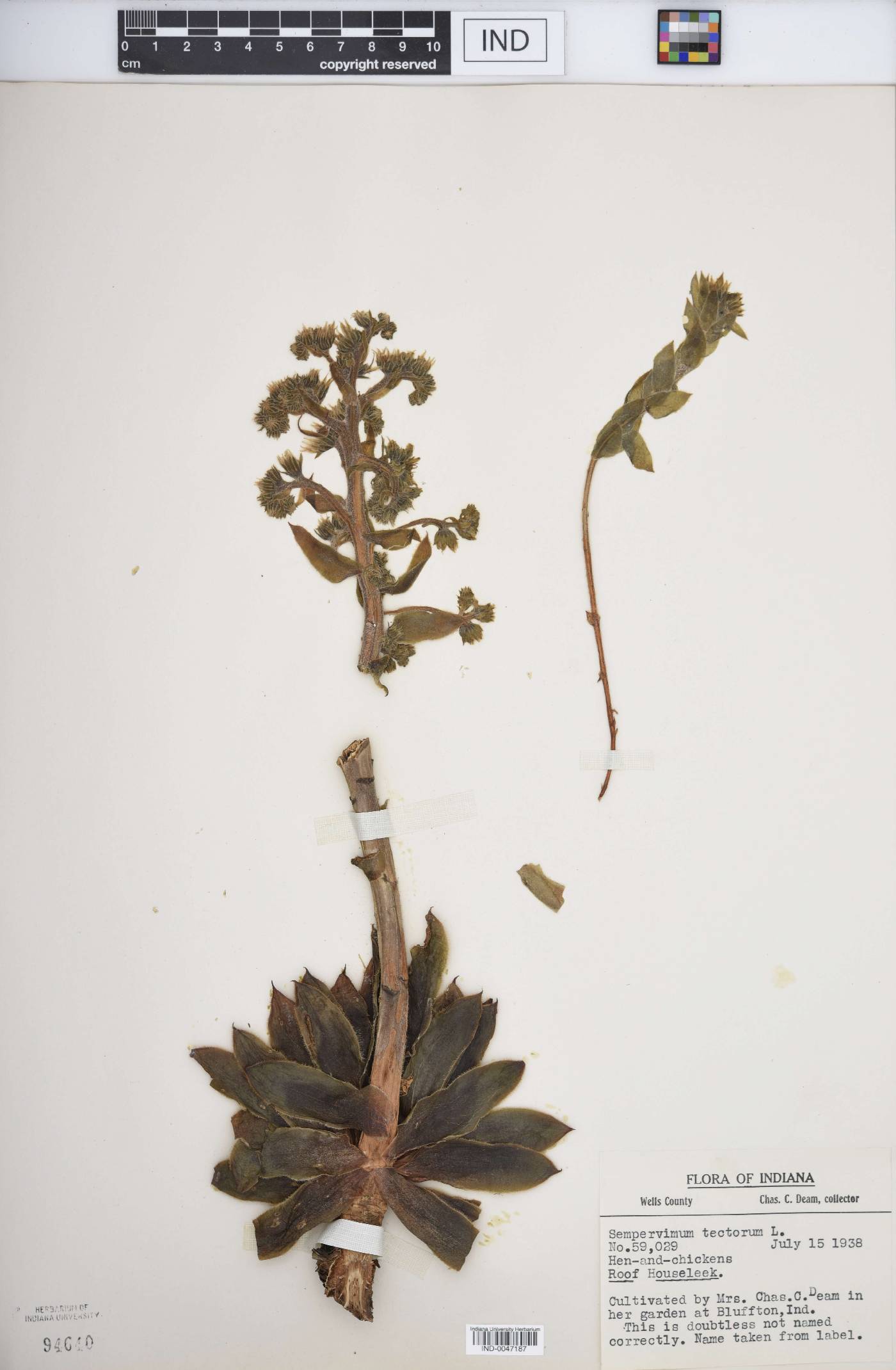Sempervivum
|
Family: Crassulaceae |
Herbs, perennial, monocarpic, not viviparous, 1-6 dm, pubescent or glabrous. Stems erect, (compressed), not branched, succulent. Leaves persistent, forming basal rosette, alternate, sessile, not connate basally; blade oblanceolate to obovate, laminar to semiterete, 1.5-4(-6) cm, succulent, base not spurred, margins ciliate; veins not conspicuous. Inflorescences terminal cymes. Pedicels absent or to 5 mm. Flowers erect, 8-16-merous; sepals ± connate basally, all alike; petals spreading, distinct, pink to purple; calyx and corolla not circumscissile in fruit; nectaries quadrate; stamens 2+ times as many as sepals; filaments free; pistils erect, connivent; ovary base truncate; styles nearly as long as ovary. Fruits erect. Seeds (brown), ellipsoid, ribbed. Taxonomic circumscription of Sempervivum has been problematic since Linnaeus described the first six species. As few as 40 and as many as 100 taxa have been assigned to the genus, and names given to forms, cultivars, and hybrids. The most recent complete treatment, by H. ´t Hart et al. (2003), provides an excellent summary of the genus and taxonomic synonyms.
Fls 6-40-merous; pet distinct or united only at base; stamens twice as many as the pet, the filaments usually pubescent at least at base; carpels distinct or nearly so, the ovaries pubescent, the styles outcurved; fr follicular; seeds numerous; succulent perennials with dense, monocarpic rosettes of broad, flat, alternate, entire, ciliate, sessile lvs, acaulescent in the vegetative phase, and reproducing vegetatively by axillary stolons or seldom by division of the rosettes. 25, Eurasia. Gleason, Henry A. & Cronquist, Arthur J. 1991. Manual of vascular plants of northeastern United States and adjacent Canada. lxxv + 910 pp. ©The New York Botanical Garden. All rights reserved. Used by permission. |

